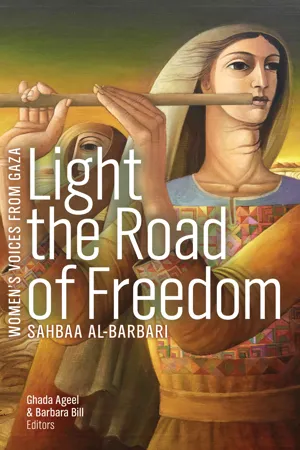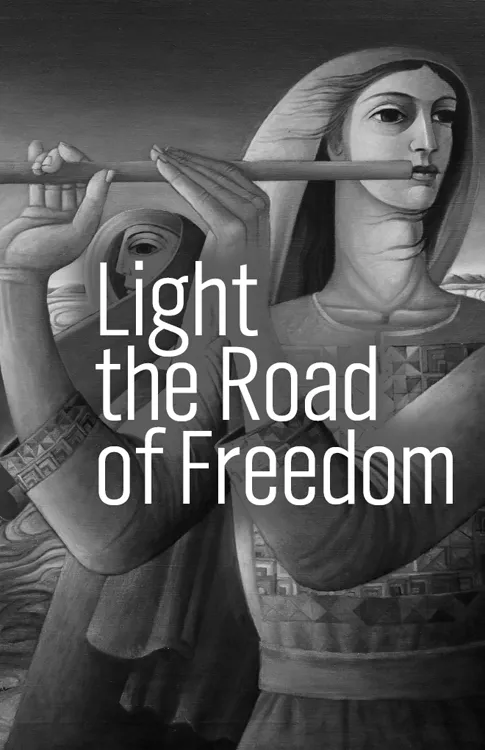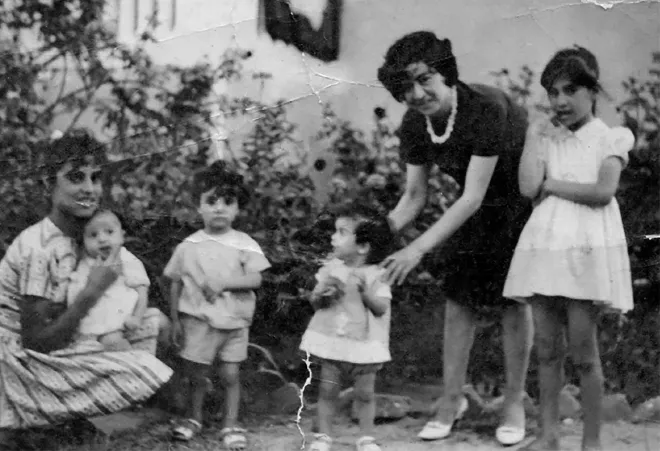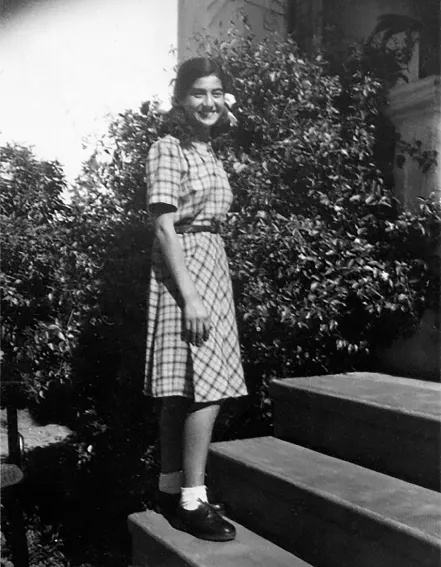![]()
![]()
1 / Growing Up in Gaza
I AM AN INDIGENOUS RESIDENT of the Gaza Strip. I was born in Gaza City in 1932 and was one of eight, with an older brother, two older sisters, a younger brother, and two younger sisters. An older sister had died of diphtheria at the end of the 1920s. Our origins are in Gaza: my mother’s family name is Halawa and my father’s family name is Al-Barbari. Our family cared a lot about education. Although my mother was illiterate, she insisted that we all receive a good education and encouraged us to finish university. While studying at university, I taught her to write the letters of her name and her signature. One of my sisters is a doctor who married and works in Syria, and my other three sisters, who are teachers or trained as teachers, live in Egypt. My oldest brother studied political and economic science at Cairo University and the other is an electrical engineer. Both of them worked in Libya and then went to Iraq, but they had to leave, as many other Palestinians did, because of some political problems, and now they are in Cairo.
My grandfather owned the Al-Barbari sesame press in Al Daraj, a suburb in the heart of the Old City of Gaza, where the Jabalya taxi station is now, that produced sesame oil and tahenah (sesame paste). My father brought sesame in very big sacks on the backs of camels and horses from all the villages in Palestine that produced it, and sometimes from villages in Egypt. There was even a village called Simsim (sesame) in Palestine, which I think was famous for sesame. After the sesame was pressed, it was stored in large metal tanks, and the residue was mixed with straw, pressed into cubes, and sold to villagers as food for their animals. There was another sesame press in Gaza called Al Hindi, also in Al Daraj.
My grandfather had a big two-storey house with three bedrooms in Al Daraj, on what became Al Wehda Street in 1967. But before then, the streets were very narrow and crowded with many houses.1 These houses were very old, with high ceilings and very thick walls, and with water cisterns in the yards. The high ceilings in the house were very practical because they kept the rooms cool and kept out the heat. The same style of architecture is still found in Morocco and Tunis: very thick walls with windows at an angle at the top to let in the breeze. My grandfather’s house was open, not closed like they are today, and full of arches and domes. There were murals on the ceilings, and from the centre of them hung candles and fawanees (lamps). The walls had deep recesses to store clothing, bedding, and mattresses. My aunt was very clever and made covers for these recesses. She ironed them very neatly, and folded them in a unique way (each garment had a different way that you could fold it to retain its shape). There was no electricity, so the clothes were pressed with a very heavy iron that would be placed on charcoal to heat.
My uncle used to read and work on the second storey, which was reached by a stairway that had a very deep storage area built into the walls, where everything was stored in sections: olive oil, tahenah, couscous, beans, wheat, sugar, rice, dried tomatoes, different kinds of jams, and different kinds of juice, because there were many orchards in Gaza. When I say store, or speak about rice or sugar, I am speaking of quantities of very big sacks, not like today where people buy by the kilo. They were stored for the year, and some villages still use this type of storage area. We used to grind the wheat and beans with a hand-operated rock mill. This rock mill consisted of two very heavy stones on top of each other. The top rock had a hole in the middle where the grains would be dropped in, and there was a handle that we turned to grind the grains between the rocks. Some people even now still use these stones.
We lived in a small house beside my grandfather’s sesame press and we could smell the sesame, which has a lovely aroma. I still remember when we were young, taking the sesame oil and red tahenah and sharing it with the neighbourhood. In the yard of our home was a covered water cistern made of ceramic tiles, with a fountain in the middle. It stored water and wasn’t very deep, about 1 or 2 metres, and a square metre in width. During winter, water wasn’t a problem because of the rain, and we collected rainwater in pots to fill the cistern. We used it when we needed it. Sometimes there were droughts during those years and there were no taps at home, so every home had a small cistern like this in the centre of the home. In summer, we would buy from a man who filled the cistern with water that he brought in goatskins, so we could use it when necessary for washing, bathing, and cleaning. This man filled his goatskins with water from a well in Sheikh ’Ejleen and would go around selling it, but some houses stored rainwater for their daily needs and did not need to buy it. There was another well called Al Sheikh Hassan, close to the beach, which sold to that area; it would supply water to those living there as well as to Gazans vacationing on the beach during the summer. When we were young, we had to clean the bottom of our cistern, which consisted of a lot of scrubbing and rinsing so that the water would not get contaminated. Later, pipes were installed.
Sahbaa (on the right) with her mother and siblings, Gaza, 1940s.
(Photo courtesy of Sahbaa’s family)
Then in about 1944, we rented our home to people in Al Daraj and moved to Al Sabra, which was a new suburb with more modern houses. They had water taps and even bathtubs inside; almost everything was like nowadays. My mother was very elegant, had many friends, and didn’t want to spend all her life in Al Daraj, so we were all happy when we rented this new house in Al Sabra, which was also closer to our school. She had a reception day every month, on Thursday, when her women friends got together for a visit and enjoyed themselves. They wore their best dresses, put on makeup, and had their hair done and dyed with henna. We were young and not allowed to join them, so we went to the Baladiyah park (a public park) and played.
In 1967 when Israel occupied Gaza, they destroyed many beautiful houses, among them the houses where my uncles and aunts lived, and they began widening the streets for their security purposes. This was the policy of General Ariel Sharon, then the commander of the southern area, to increase control in Gaza and guarantee easy access for military jeeps and vehicles to commute through the streets. They did this in order to supress and arrest the Fedayeen and the activists. It was then that my grandfather’s house was demolished and a new one was built, which my aunt now rents out to families. I wasn’t there when the house was destroyed so I don’t know the details, but when I returned to Gaza, I was astonished because everything was completely changed. I saw the new Al Wehda Street and was deeply saddened because the house in which we grew up and had many childhood memories was gone and now became just that: a childhood memory.
Every morning, we greeted my grandfather and kissed his hand, and he gave us one qersh (Palestinian piaster). We had Palestinian currency then, as well as Palestinian stamps and Palestinian passports issued by the British Mandate. The British Mandate administered Gaza, and every four years a district commissioner would come with his family to live here. Then they would move to other areas like Nablus or Haifa because Palestine was divided into sixteen districts.2 The commissioner was the connection between the Mandate and the people, and he solved their problems with the British, especially if someone had a relative in the English prison or there were problems concerning the Fedayeen, or any other troubles at the district level. He was a mediator, like the governor or mayor nowadays, and was regularly moved so he wouldn’t develop relationships with people that could later become a threat to the Mandate. There were Palestinians who invited these officials to their homes and fields for social occasions like weddings and celebrations—and while some Palestinians might have advanced their interests with the colonizers, for the most part, it was genuine and pure Arab generosity. Many officials were sad when they left Gaza because the people were very kind, humble, and forgiving, even though Gaza was the southern agricultural zone and considered one of the poorest areas in Palestine. I remember groups of British and Australian soldiers used to come and go. We saw them sometimes passing through Gaza on their way to Egypt, and some of them were black or very dark brown.3 As children we were afraid of soldiers, so we used to flee whenever we saw them.
The British Mandate had centres in many places, and in Gaza it was Al Saraya that was the centre for the British army.4 The building in front of it, what we now call the Abu Khadra building, was the headquarters of the international observers when they came to Gaza in 1957 to monitor the situation after the Israeli withdrawal in the aftermath of the 1956 invasion.5 During the 1930s and 1940s, all the area from Al Saraya, the centre of Gaza City, to the sea was big empty hills of sand that separated Gaza City from the beach. We passed Al Saraya on our way to the beach on donkeys, or sometimes in taxis, but there were very few taxis then.
Sahbaa at home, Gaza, 1940s.
(Photo courtesy of Sahbaa’s family)
This is the extent of what I remember of back then as I was young at the time, but I remember a cousin of my father who lived in Al Majdal town, which is about 20 kilometres from Gaza, who was active with the Fedayeen. He was caught by the British soldiers and imprisoned for five years because he had a gun, and when he was released, I went with my father to welcome him. This was during the 1940s. Having a weapon was forbidden by the British because they didn’t want us to defend ourselves against them or the Zionist militias; they were causing many problems for the Palestinians and taking over our land by building small colonies and military posts, which they would then slowly expand from. So, whoever the British caught possessing a weapon, or even a knife, would be sent directly to prison—sometimes for a very long time.
I remember some demonstrations protesting the British policies in Palestine, but I am not sure of the specific reasons for the ones I witnessed. In 1936, there were many problems with the British and many demonstrations against them, but I only vaguely remember groups of people chanting in the streets of Gaza.6 Later, I learned from researching and reading that there was a six-month strike that was part of the Arab revolt, in which transportation and the movement of goods were stopped. People were protesting the British policies that allowed tens of thousands of Jews to immigrate to Palestine, as they felt the threat of this influx of foreigners who were taking over our land. In Gaza, like everywhere else, committees and groups were created to protest and fight the British. Some people in Gaza even stopped buying through the English, boycotting their businesses, and cutting any ties with them.
We used to visit and play outside with the neighbours’ children. We played marbles, went to the sea, and made our own toys such as arayis (bridal dolls). We drew the outline of the doll on material, then cut, sewed, and stuffed it with other material or whatever we had. We made her hair from cotton or wool thread and drew two eyes and eyebrows, a nose, and a mouth, and made different outfits for them. We also flew colourful kites that we made during school vacation in the summer. We had competitions to see who could make the most beautiful kite and who could fly their kite the highest, and sometimes there were problems when the strings would get tangled. We flew our kites close to the sesame press because there was a wide, empty area where they could fly free, and when we moved to Al Sabra, we flew them from the roof of our house. We also went to the cinema and the current Baladiyah park, close to the Al Saraya centre, especially during the three-month summer vacation. I have very nice memories of that time. There were three cinemas in Gaza then and they were segregated: one side for men and the other for women. We went every Friday with our family or friends to see Arabic films, mostly Egyptian ones. I wonder now how we are in the twenty-first century and don’t even have a cinema here, but we did in the 1930s and 1940s, maybe even before then. Once when I was very young, my mother took me to the Al Hamra cinema in Jaffa.7 I don’t remember much of what I saw, but I remember the feeling of being taken aback with the beauty of Jaffa. We sometimes read small stories, but not much because we were tired after studying for exams, so during the summer holidays we played, went to Gaza beach, and helped our mothers and neighbours, and everyone had a special job. The social fabric of Gaza then was very strong, and people helped each other. I can say that this is still the norm in Gaza, despite the passage of years.
My job was helping my mother bake bread, and like most people, I took the dough to an oven in Al Daraj for the baker to bake. Some people in Gaza City had a clay oven in their home so they baked the bread themselves. But most people used the bakers’ ovens, which were always situated in close proximity to people’s homes. In Al Sabra, a boy came and collected our dough for the oven, and we paid him. We also sent spinach bread, thyme bread, meat covered with dough, and ka’k al ’Eid (’Eid biscuits) to be baked in the oven. It was not like today, where people can cook in their own ovens or buy them ready-made; this was what we did then. Usually, old ladies made ka’k al ’Eid and we helped by sprinkling icing sugar on them after they were baked. Then we stored them in big containers in layers so they wouldn’t break. Guests were offered ka’k when they came at night, and all through Ramadan you could smell ka’k everywhere as they cooked. We exchanged with each other to see whose tasted the best. To this day, people still keep this tradition and do these taste tests of each other’s cooking.
We bought clothes for ’Eid (the celebration of feast after the holy month of Ramadan) from Jaffa. My mother bought socks and shoes and new dresses, and sometimes made the dresses herself because she was talented and skilled at sewing. Then we ironed and wrapped them, and sometimes laid them flat under the mattress, and waited for the morning to celebrate. On the morning of the feast, we shook hands and then kissed the hands of my grandfather and father before they gave us the ’Eidiyyeh (money given to children on ’Eid day), a custom of the feast.
During most of the summer it was so hot in the houses and there were no air conditioners or refrigerators, so Gazan people went to the beach. We usually walked or rode donkeys or horses, and many families owned animals that they used for local transportation. We took food, drinks, clothes, and tents, and stayed for the three months of summer vacation. And from time to time we checked in on our houses. The weather was different then, with cold, rainy winters and hot summers, unlike the dry winters of these days.
My mother used to take us to Hammam Al Samra in Gaza’s Old City.8 It was the time to relax from the whole week for ladies, and they made appointments with each other to go there or went in groups with their neighbours, so the bath was usually crowded. It was a social event where women met, laughed, gossiped, and enjoyed their time. We were young and listened to their stories, jokes, and chatter, and overall just enjoyed the atmosphere. We carried our clothes, combs, perfume, towels, and a special thick black soap of pure olive oil imported from Syria in a special bag called ...



